Liberation 70 by All Things Bukit Brown
Publishers: Singapore Heritage Society and Ethos Books
Date Of Publication: 5 December, 2015
The Singapore Heritage Society (SHS) and All Things Bukit Brown (atBB) are pleased to announce their plans to publish a collection of essays and poems, mined mainly from oral history and family archives, which looks at the Second World War (1942-1945) and the impact in Singapore from the perspective of those interred at Bukit Brown Cemetery.
The book commemorates the 70th anniversary of the Liberation of Singapore under Japanese Occupation (Sept 1945) by offering new material and insights into the human tragedy of war, which adds another layer to the already vast literature on WWII in Singapore.
“The stories have taken us to the Endau Settlement in Johor, to Taiping (Malaysia) and to the beaches of Normandy in ways so unexpected they took our breath away,” said Claire Leow and Catherine Lim, co-founders of All Things Bukit Brown, a group of volunteers who work to raise awareness of the municipal cemetery. “It is a slow and at times painful unravelling of family history, lost in memory but for the persistence of descendants. It has taken seven decades for some of these fragments to be pulled together, and we see this not as a one-off book but a first step in the difficult journey of re-discovery and re-membering. The narratives also re-affirm to us Singapore’s place in regional and global historical narratives.”
It is a known fact that many who lived through the horrors of war and Occupation barely spoke about those days. The 70th anniversary of the Liberation, coinciding with an outpouring of emotion as Singapore celebrated the Jubilee of independence (SG50), unlocked the memory vaults of strangers who entrusted the editorial team with intimate familial stories and memorabilia. The compilation will span across the immediate pre- war, occupation and post-war years for the people of Singapore. It will also feature a poem of lamentation for soldiers lost in the battle at Bukit Brown, juxtaposed against recently unearthed official archival material on the battle that was fought at Cemetery Hill aka Bukit Brown Cemetery, with anecdotes from the diaries of soldiers, the pastor who bore witness to the aftermath, as well as memories of surviving prisoners of war who lived in the nearby Sime Road POW Camp. Most of this will be new, unpublished material.
SHS is pleased to support this ground-up project, as an extension of the advocacy the society encourages and the Bukit Brown cause that SHS has backed since 2011, when the cemetery came under threat of development first through a highway and later, housing.
“Bukit Brown has unexpectedly turned out to be a touchstone about the loss of heritage – tangible and intangible – in a Singapore eager to modernise and develop,” Chua Ai Lin, President of SHS. “The book is an important evolution of the civil society movement to uphold Bukit Brown as a site of national significance, and illuminate one of its more fragile narrative threads. It brings together at once the strategic and personal importance of the site, and SHS is pleased to once again support All Things Bukit Brown, which has evolved from a volunteer base guiding weekly public tours and regular customised tours, to hosting exhibitions and participating in arts programmes to reach as broad a support base as possible to save what is left of the site.”
The book, which now has the working title “Liberation70”, is ultimately a tribute to those among us, civilians and soldiers who laid down their lives. In the Ode of Remembrance read at most war commemoration ceremonies worldwide, the public repeats the key line, “We will remember them.” This is our collective act of remembrance.
The book will be co-published by the Singapore Heritage Society and Ethos with a partial grant from the National Heritage Board, under its Heritage Participation Grant. All proceeds from the book will be channelled into future Bukit Brown projects.
————————————————————
Singapore Heritage Society was founded in 1987 and is a non-profit, non-governmental organisation and registered charity with Institution of Public Character (IPC) status. It is Singapore’s leading organization dedicated to research, education and advocacy on Singapore’s history, heritage and identity. SHS is behind many significant publications on Singapore history including Syonan: Singapore under the Japanese, 1942-1945 (1992); Memories and the National Library: Between Forgetting and Remembering (2000); Spaces for the Dead: A Case from the Living (2011).
All Things Bukit Brown (atBB) is the banner for a community of volunteers who conduct independent research and guided walks on Bukit Brown Cemetery. Since they came together as a community in 2012, they have collectively organised public talks with partners such as the NUS Museum and Chui Huay Lim Club, two exhibitions and successfully nominated Bukit Brown Cemetery as the first site in Singapore to be placed on the World Monuments Fund Watch list 2014-2016. Claire Leow and Catherine Lim, co-founders of the blog, bukitbrown.com are the editors for the book, backed by a volunteer editorial team from within the community.
An update on this post as Jing Xiang has completed his Masters thesis
Abstract : Housed within Bukit Brown Cemetery are the many tombs of pre-independent Singapore pioneers with syncretic elements of a multicultural milieu. It remained a largely forgotten site except to families who visit the burial ground especially during the annual Qing Ming (tomb sweeping) festival.
In 2011, the state announced plans to redevelop Bukit Brown. Civil society groups, who saw the site as one rich in biodiversity and embedding an important historical past, contested the decision. This contestation rehearses a long-standing tension between heritage and progress in Singapore. This dissertation recasts Bukit Brown Cemetery as a highly charged site where notions of identity and belonging are latent.
The dissertation argues for an understanding of this forgotten landscape as integral to the Singaporean psyche of home and nation. Using Benedict Anderson’s concept of imagined communities and Henri Lefebvre’s spatial trilectics as its theoretical
frameworks, this paper outlines the spatial taxonomies present in Bukit Brown, and how identity is produced and anchored in those spaces. The inquiry unfolds on two scales: the first is a micro-territorial scale where the spatial practices of the individual and domestic unit are studied in relation to the tombs and myths found within and around Bukit Brown. The second one looks at Bukit Brown as macro-territory dotted with cultural anchors signifying collective histories.
Taken together, these two scalar frames reveal the complex structures of individual and collective identity, and how such structures are still actively forming/reforming at the Bukit Brown Cemetery.
His thesis can be found here
=========================================
First Published on the blog on 20 August, 2014
Some elements in the drawing are all too familiar landmarks in the cemetery, while others suggest hidden secrets, or things that,as of the present moment, has disappeared due to the roadworks. The drawing straddles between what is real and what is imagined, what is there and what is not there, or ‘not there’ because we can’t see it (yet) like other intangible (forces or) values of Bukit Brown.
(please click to view and appreciate full image)
When the country is broken and families are upturned, fame and fortune mean nothing.
Although I am forced to wander, I am not yet lamenting that our cause is hopeless.
My eyes may be luckier than that of Lu You, for I may (live to) see the day when the righteous army sweeps north and pacifies the central plains
[i.e., when we have driven out the Japanese].
Meeting point, Bukit Brown gates at the end of Lorong Halwa.
In the event that the old main Gate has been closed, kindly wait / meet at the new connecting road which is after the old road.
10 am – 12.30pm with Keng Kiat covering Hill 3. Please register on peatix which has details here
4pm – 7 pm with Darren Koh : An Introduction to Bukit Brown. Please register here
Disclaimer: By agreeing to take this walking tour of Bukit Brown Cemetery, I understand and accept that I must be physically fit and able to do so.To the extent permissible by law, I agree to assume any and all risk of injury or bodily harm to myself and persons in my care (including child or ward)
By Zhang Jiayi
In the early afternoon last Sunday (2 August, 2015) I dreaded my decision to go for a guided walk around Bukit Brown cemetery. However, I have promised my friends that I will turn up, so grudgingly, I made my way to the meeting point for the walking tour. Three hours and a lot of mosquito bites later, it is a decision that I did not regret.
Tombstones don’t lie. All aspects of the tombs – from the layout, the materials used, the carvings and statues around the tomb – give us snippets of information about the individuals and the Chinese immigrant community in early Singapore. The tour shed light on the stories of the individuals; after the tour, the occupants of Bukit Brown turned from random people to dignified individuals who made a difference to the social reality we experience today. Our history and social studies curriculum doesn’t do justice to the various individuals who made a difference to Singapore. While we know a significant bit about Tan Tock Seng, we overlooked the contributions of his eldest son, Tan Kim Ching, who is also buried in Bukit Brown. Tan Kim Ching not only participated actively in philanthropy, just like how Tan Tock Seng did, he also had a close relationship with the royal family of Siam (known as Thailand now), and played an important role in diplomatic relations between the Straits Settlements and Siam. It is also to my surprise that the 72nd generation of Confucius also set foot in Singapore, and is also buried in Bukit Brown cemetery *.
The diversity of the ‘residents’ of Bukit Brown was jaw dropping. Tombs of Hokkiens, Teochews, Cantonese, men, women, the rich and the poor can be found in Bukit Brown cemetery. A range of calendars was used in the inscriptions of headstones in documenting the time of birth and death of individuals. Some Chinese pledged allegiance to the Ming dynasty of China and at their time of death dreaded the fact that they would be buried in a foreign land, while others were content to call Singapore home and to be buried here. I saw for myself the intricate Peranakan tiles laying some of the tombs of wealthy Peranakan Chinese, who chose to be buried in Bukit Brown as they did not identify with their Chinese dialect clans. It was also fascinating to gain an insight on how the early Chinese viewed death – many of them viewed their tombs as their homes in afterlife, and the layout of the tombs resembled the layout of homes. Much thought was put into the building of tombs; some tombs had carvings transmitting values like filial piety, some had intricate statues symbolizing prosperity, fertility and abundance, while other had inscriptions revealing how they felt when they were buried in Singapore. The trip was especially meaningful for me, as a female.
I learned more about the contributions of early Chinese women to the cause of gender equality we have today. Ms Lee Choo Neo, the founder of a Chinese Ladies Association, lobbied for the right of females to live a more enriching life. The Association taught domestic skills, supported education for females, and sponsored a rescue home for women. She was in her teens when she started these big projects. She can be rightfully known as, according to my understanding, the grandmother of the civil society in Singapore. The experience exposed how much I didn’t know about the history of Singapore, beyond what was taught in our social studies and history textbooks. I was deeply humbled by the number of times I widened my eyes in surprise as the volunteer guides (Brownies) dropped nuggets of trivia about prominent early Chinese immigrants. There is just so much the cemetery revealed about who we are as Singaporeans before Singapore’s independence, and the place unjustified the sweeping claims about how Singapore is ‘cultureless’.
As we celebrate 50 years of Singapore’s independence, let us remember, as the guides rightly pointed out, that it is also our 70th year of liberation from the Japanese Occupation, and almost a century from the time we were first part of the Straits Settlements. It is my hope that the stories told during the tour are documented and made available to a wider audience, lest our social history be like those resting in Bukit Brown cemetery – buried six feet underground, never to be seen or heard by the future generations of Singaporeans.
*Editors Clarification: The 72nd direct descendant of Confucius had prepared his grave with the intention of being buried beside this wife who passed away before him, but he was buried at Bidadari instead. We thank Jiayi for taking time to pen her thoughts on her first visit to Bukit Brown and invite anyone who would like to contribute a blog post to write to a.t.bukitbrown@gmail.com. For information on guided walks please visit bukitbrown.com for weekly updates.
About Jiayi: Jiayi is a young Singaporean still in search of what makes her Singaporean. She is interested in issues relating to the Singaporean society as a whole, including social stratification, education and national identity.
*********************************************************
“Remembrance” : NDP 2015@Bukit Brown
Time: Between 8am and 7.30pm
Meeting Point: Various.
Remembrance Ceremony : 6.30 pm to 7.30pm @Block 1, as you enter on your right of new access road, you can’t miss us. We have flags!
This NDP 2015 @Bukit Brown, we remember and pay tribute to the space that embraces the touch stones of our memory, 100,000 tombstones. 100,000 lives; from Coolies to Community leaders, Paupers to Poets, Social Reformers to Socialites with a cause.
Bukit Brown is a microcosm of life at the turn of the 20 century – a collective narrative of hardship, struggle and triumph against the odds. So come celebrate Remembrance and lest we forget, we will remember the victims of war and our war heroes in this, the 70th anniversary of Liberation from Occupation with 2 walks from outside Bukit Brown leading to Bukit Brown. There will also be 2 guided walks within Bukit Brown starting in the late afternoon.
There have been drastic physical changes to the landscape since we started commemorating our Nations Deceased Pioneers (NDP) @ Bukit Brown in 2012. We lost the roundabout, then the ‘ole raintree and by 9th August 2015, the old road to Bukit Brown will be closed and a new road a few meters away is slated to open. But we endure and we will remember.
So join us for a simple commemoration, simple food, but rich stories. Look out for registration details for 3 walks on peatix which will be forthcoming at the end of this week 25/26 July, 2015. But available now for registration is:
1) NDP Guided Walk : Former Rail Corridor to Bukit Brown
Please register here
Facebook page here
Starting 8am – eta @Bukit Brown 4pm Meeting point is Kranji MRT station
“Join us as we start walking from Kranji MRT, down the former rail corridor, past Rail Mall, along Rifle Range Road, into MacRitchie Reservoir, and finally into Bukit Brown.
There will be a toilet break at Ten Mile Junction (approx 7km Walk)
There will be a lunch break at Rail Mall (approx 10Km Walk)
There will be activities planned in Bukit Brown as we celebrate National Day in a unique way.
As the entire walking distance is about 20km, participants are advised to:
– wear comfortable clothes, and walking shoes
– bring a cap / hat, in case of sun
– bring an umbrella / raincoat, in case of rain
– bring insect repellent / spray, in case of bites
– snacks, in case you go hungry …
– WATER WATER WATER
Looking forward to seeing you all on National Day!” From Keng Kiat and Beng Tang, your volunteer guides on this long walk.
================================================
2) NDP Guided Walk : Heritage Walk: From Singapore Botanic Gardens to Bukit Brown Cemetery
Join Simone and Bianca on a walk through the heritage lane, starting from the Botanic Gardens to Bukit Brown Cemetery. The Brownie ladies will share stories of WW2 heroes and prominent personalities at heritage landmarks, including the Jacob Ballas garden, the old Raffles College and the old Command House. The trail continues into Bukit Brown cemetery while we explore remnants and stories of the ‘kampung’ life that was once there
—————————————————————————
This guided walk starts at 3.30pm at Botanic Gardens MRT and we will end the walk near the entrance of Bukit Brown Cemetery, in time for the Remembrance Ceremony at 6.30pm. http://bukitbrown.com/main/?p=10040
Meeting Point: Botanic Gardens MRT Exit at ground level (near Cluny Court). We will be holding a sign to identify ourselves.
————————————————————————-
We’ll be walking on paved roads as well as trekking through the jungle so make sure you wear proper outfit for a light jungle trek. There are no bathrooms along the way and no places to buy water, so make sure you bring some snacks and drinks along and visit the bathroom before we start. And apply the mosquito repellent!
Sign up on Peatix:
3) “Founding Fathers” Guided Walk with Fabian Tee @ 4pm
Join Fabian as he shares stories on the lives and times of :Founding Fathers” of revolution and reform, in honour and humility. and #lestweforget those who perished in WW2.
Please register on peatix here
4) Mandarin Guided Walk with Yik Han @ 4pm
由Yik Han负责的华语导览将介绍几位安葬在武吉布朗坟场,来
集合地点:坟场正门(即Lorong Halwa入口处)
==========================
报名:
请在我们的Facebook活动页面按‘参加’/
—————————————————————————
3) and 4) guided walks start at 4.00pm and ends at 6.30 pm at Block 1.
Meeting Point: Bukit Brown entrance at new access road parallel to former entrance at Lorong Halwa
All participants to NDP 2015@ Bukit Brown will receive a World Monument Fund watch day bag while stocks last, and light snacks and water will be provided at the Remembrance ceremony.Watch this space for details of the other walks! Please register when its up, to help us prepare enough food and drink and minimise wastage. Our pioneers do would not approve of wastage!
The Way We Were:
Join Darren on Saturday 18 July @9.00 am as he introduces you to Bukit Brown, and some of what lies within it! Hear him share stories of people who came across the seas as well as those who were born here – people who are pioneers of Singapore.
More info and register for a free ticket here :
The Battlefield tour
Sunday 19 July ’15, 9.30am – 11.30 am
Meeting point is at the pedestrian bridge on Sime Road entering Bukit Brown, opposite the SICC traffic light.
Please bring umbrella or poncho / sun block / mosquito repellent.
Please wear covered footwear.
Please register for a free tickets and more important information Here
Update: For the latest on which library the exhibition has moved to please click on this FB page link
Becoming Bishan: A Heritage Exhibition
What is Bishan? A concrete jungle of million-dollar HDB flats? The futuristic, award-winning architecture of SkyHabitat and Bishan Library? Or even the bustling activity of Junction 8? These are the conventional perceptions of the young, vibrant town of Bishan – an ex-cemetery transformed into a heartland showpiece.
Our team, however, felt that there just had to be more to this rising area. Whether we were lifelong residents of the district or saw it as a mere part of our daily commute to school, we became increasingly curious about how this place came to be. Why was there even a cemetery in Bishan in the first place? Did people live in Bishan before the HDB flats were built? What was Bishan’s place in the Singapore Story?
Driven by overwhelming curiosity, we, in conjunction with the Raffles Archives and Museum, embarked upon the Becoming Bishan Project, hoping that the outcomes of our research would be able to provide a poignant contribution to our country’s jubilee celebrations.
Our first step was to analyse the development of Bishan through maps. One of our members, Yilun, is an avid map enthusiast with an especial interest in urban redevelopment. With gusto, he surfaced many old maps of the area, the oldest dating back to 1924. Through painstaking effort, he managed to highlight the stark changes in the landscape of the area, as well as match old landmarks of the area to more familiar present-day ones. The topographical studies revealed many details about the geography of the Bishan area. Today, the land that makes up Bishan is rather flat. However, the contours of old maps suggest that pre-redevelopment,
Bishan was covered by rolling hills. Many photographs also show the grave-covered hills with the HDB flats of Toa Payoh in the background. This explains the how the name “Bishan” (“Jade Hills” in Mandarin) came about. One of our interviewees even compared the view from a Toa Payoh flat to a green dragon, because of the undulating hills and the scale-like tombs on them.
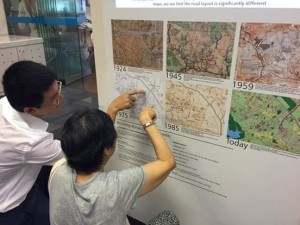
The highlight is a series of maps of Bishan tracing the landscape of changes from 1924 to the present (Photo RI Student Project Team)
There were several kampongs within the cemetery, the most notable one being Kampong San Teng, whose kampong association members still meet regularly today. Interviews with the old residents revealed a rather self-sufficient community, with a school, farms, a teahouse and a market. There was also a cinema, Nam Kok cinema, in the Bishan area that screened Chinese and Western films. A worker in the KPT coffee shop in Bishan North told us of how he used to work there, proudly showing us his old posters of Elvis Presley and actors from Hong Kong. But when we asked about people’s impressions of Bishan before redevelopment, the greatest fears were not ghosts and spirits, but secret society activity.
We also made several exciting discoveries along our research journey. One was that Bishan was once a World War II battlesite! Jon Cooper, who also runs the Bukit Brown battlefield tours, managed to surface the battalion diaries and hand-drawn maps of the Second Cambridgeshire Regiment. These documented the action at Braddell Road in the dying days of the Battle for Singapore (1942). Further research revealed that the battle positions occupied by the British troops are the present-day locations of Junction 8 shopping mall, Bishan Library and Raffles Institution. This story was corroborated by many residents, who recalled the sounds of gunfire through the rolling hills of Bishan. Another revelation we made was that the philanthropist Wong Ah Fook was once buried in the Peck San Theng cemetery and his ashes now lie in the columbarium, something that even those running the columbarium had been unaware of.
Along the way, our team has also met and befriended many diverse characters, who each have their own personal stake in Bishan. From the intriguing Mr. Molay, a Cantonese-speaking Indian man whose father once owned a hundred cows in Bishan, to the unabashed Mr. Loh, who once ate human flesh to survive the deprivation of the Japanese Occupation, it is the stories of these people who make the Bishan Story come alive. We thoroughly enjoyed the opportunity to talk to these individuals and learn more about the almost-foreign land that is the past. Later, we also spoke to current residents who told us about their thoughts and memories about this place. Though it is hard to say that the HDB dwellers of today have the same community spirit as kampong residents did, it was interesting to note how people develop, or fail to develop, attachments to Bishan.
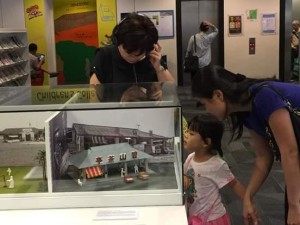
Visitors to the exhibition have a chance to listen in on their memories of Bishan as a cemetery and its social community life then (photo RI Project Team)n
We feel immensely privileged to have had the experience of exploring Bishan’s story and curating this exhibition, and hope that you might find meaning of your own in our fruits of labour and love.
The Becoming Bishan exhibition will be officially launched on 11 July (Saturday), from 9 am – 12 noon, at the Bishan Community Library. This event will be graced by Senior Minister of State Josephine Teo. The exhibition will run at the Bishan Community Library from 1 July to 23 August, Ang Mo Kio Public Library from 24 August to 30 September and Toa Payoh Public Library from 1 to 31 October.
This is a student project from Raffles Institution, as part of the South cluster schools’ contribution to the SG50 celebration efforts.
This blog post is a team contribution from the students of Raffles Institution involved in Becoming Bishan.
atBB reviews:
atBB visited the exhibition and we are struck by the sheer breath of the history and heritage the students have been able to uncover of Bishan and how it has evolved into what it is today. From the old to the modern, the curated posters capture more than a snap shot, but with carefully chosen quotes, it has emotional resonance such that, one can be transported to a different time and space in Singapore.
Of particular interest was the coverage on how the community coped with WW 2 and provided refuge for other residents in other areas in war torn Singapore.
The exhibits on WW II was an eye opener with artefacts from both Japanese and British sides.
Augmented with video recordings of residents interviewed makes this exhibition a exemplar template for exhibitions on other neighbourhoods to emulate. Accompanying the exhibition is a pictorial booklet which value adds the exhibition and makes for a treasured keep sake for those interested in history and heritage and the transition to the modern.
atBB has been following the development of this project since the students first approached us for help in understanding cemetery culture and symbolism. We are proud to have made a small contribution to this project and have to say that full credit go to the students for taking it so far from when they first began. Congratulations and well done!
Mdm Chng of the Pang Family – A Mother of Journalists, Educationists and Revolutionaries
by Ang Yik Han
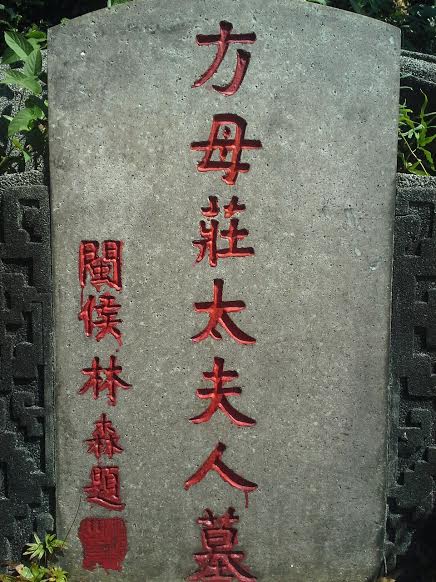
The tombstone of Mdm Chng, who died in 1936 at the age of 77. The characters on the tombstone were written by Lin Sen, KMT Chairman. (photo Yik Han)
Located at Hill 4 in Bukit Brown, the Teochew style tomb of Mdm Chng of the Pang family (方母莊太夫人) is simple and nondescript. A sharp-eyed observer will notice however that the calligraphy on the tombstone came from the hand of Lin Sen (林森), Chairman, of the ruling pre war Nationalist government in China.
Another sign of her family’s close connection to the Kuomintang was the fact in her obituary in the Nanyang Siang Pau, she was described as the mother of a martyr. This was in reference to her second son, Pang Nam Gang (方南岡), whose story was recorded in Feng Ziyou’s “Anecdotal History of the Revolution《革命逸史》” published in 1948.
Although two of Mdm Chng’s sons passed away before her, the names of all her sons were inscribed on her grave: Siao Cheok少石 (deceased), Nam Gang 南岡 (matyred), Chee Dong 之 棟, Huai Nam 懷南, Chee Cheng 之楨. Also present were the names of two daughters, though her obituary only mentioned one surviving daughter.
Pang Nam Gang had a good grounding in classical Chinese education. However, he spurned the traditional path of becoming a mandarin and chose to pursue his studies in Japan. There, he joined the Tongmenghui. Deeply committed to overthrowing Manchu rule, he devoted his time outside of studies to learning how to make bombs.
In 1905, Pang and eleven of his compatriots in Japan were ordered by Sun Yat-Sen to return to China to assist in the Huang Gang uprising in the Teochew region. Injured while preparing bombs, he was brought to Hong Kong and hospitalised, hence missed out on the action. When the uprising petered out, Pang decided to join his uncle who was a local governor in Gansu, with the intention of seeking opportunities to incite the local Hui people to rise against the Qing. His uncle was initially pleased to see his nephew, but flew into a rage when word reached him that Pang was a revolutionary. Locked up by his uncle, Pang escaped with the help of other relatives, stealing two horses and riding to Hankou, where he sold the horses and boarded ship for Japan to continue his studies. Eventually, he made his way to Penang where he became the editor of the Kwang Wah Yit Poh newspaper which was linked to the Tongmenghui.
The young revolutionary could not sit still for long. When news of the successful 1911 uprising in Wuhan reached the Nanyang, Pang rushed back to China where he raised a fighting force in his home county of Pho Leng. When Yuan Shikai was elected the first President of the nascent Chinese Republic, Pang felt that Yuan could not be trusted as he had too many links with the old regime. Disgruntled, he returned to Penang where he took up his old job at the newspaper.
Pang’s worst fears came true in 1915 when Yuan Shikai assumed the title of Emperor. This time, he could no longer abide the situation and returned to China again to fan the flames of revolution. Unfortunately, he was captured in Macau by Yuan Shikai’s agents and smuggled across the border and imprisoned. At first, he assumed a false identity and did not divulge any information even under torture. However, his fervent preaching of revolutionary ideas to his fellow prisoners gave him away and he was summarily executed. So perished a martyr of the Chinese Revolution at the age of 29.

Photo of Pang Nam Gang (reproduced from the book “The Teochews in Penang: A Concise History” by Mr Tan Kim Hong)
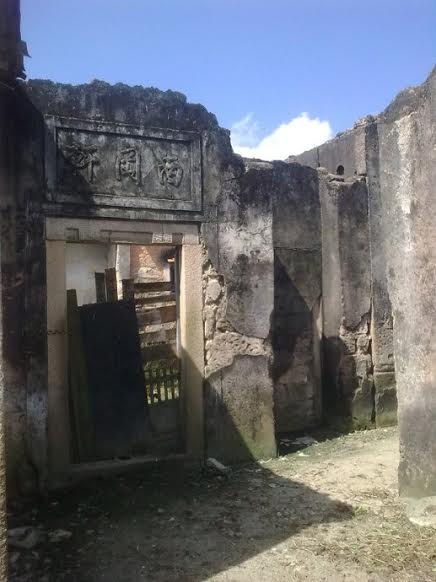
The house of Pang Nam Gang in Pho Leng (taken from the site 方益森的博客 http://blog.sina.com.cn/s/blog_756c1ab90101ipv2.html)
Mdm Chng’s obituary also mentioned that her three surviving sons were active in the areas of journalism, education and social works. Her youngest son, Pang Chee Cheng (方之楨), was in the limelight as well for his involvement in politics. A journalist, he was a KMT cadre who actively canvassed support for the party as one of the main committee members of the Nanyang branch headquarters.
In 1930, Sir Cecil Clementi became the Governor of the Straits Settlements. He had a dislike of the KMT due to its instigations of strikes during his previous posting in Hong Kong. On the day that he arrived and assumed office in Singapore, it was unfortunate that the KMT Nanyang branch headquarters chose to hold its general meeting at the same time.
One of the first acts of the Governor was to summon the KMT representatives to his office where he told them in no uncertain terms that the KMT was not allowed to operate local branches in the Straits Settlements and Malaya. A few months later, the Governor upped the ante by issuing orders to deport Pang Chee Cheng and another KMT stalwart; well aware of the situation, they left on their own for China first.
Quiet diplomacy between the British and Chinese governments behind the scenes eventually led to the deportation orders being rescinded. In later years, Pang Chee Cheng was based largely in China where he was active in the Overseas Community Affairs Council (僑務委員會) set up by the Nationalist government.
Pang Chee Cheng often met with renowned personalities of the day. So it was that when the Indian poet Tagore visited in 1927, Chee Cheng arranged for him to travel to Muar and visit Zhonghua School (中華學校, a forerunner to today’s 中化), where Tagore was received by his brother Pang Chee Dong (方之棟) who was the principal then. A graduate of a university in Beijing, Chee Dong was successively principals of Chinese medium schools in Kajang, Muar and Batu Pahat. In 1933, he may have worked as editor of a Chinese newspaper in Rangoon as well.
After the Japanese invaded, he perished during Sook Ching in Singapore, leaving behind his widow and 2 sons.
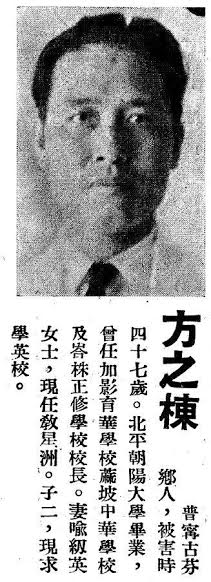
A short biography of Pang Chee Dong in the 8th anniversary commemorative publication of the Nanyang Pho Leng Hui Kuan published in 1948.
The fourth son Pang Huai Nam (方懷南) was the first editor of Nanyang Siang Pau (南洋商報) established by Tan Kah Kee in 1923. Slightly less than a month into its publication, he left the newspaper as the Straits Settlements authorities found his writing too political for their liking. He was also a committee member of the Poit Ip Huay Kuan and principal of Choon Guan School. It was mentioned in Phua Chay Leong’s “The Teochews in Malaya” that he shared the same sad fate as his elder brother Chee Dong during Sook Ching.
Mentioned as well in Mdm Chng’s obituary was one of her grandsons, Pang Say Hua (方思法). Born in Singapore to her eldest son, he was “fostered” to his uncle Pang Nam Gang; his father was convinced that his second brother would come to no good end with his revolutionary ways and hence it was better that he had a son to his name. Pang Say Hua went back to China to study and subsequently became a signaler in the Nationalist Army. He was one of the many caught up in the tumult of the times. Due to his background, he suffered after the Communists took over, being imprisoned for over ten years. After his release, he worked at various jobs and retired in 1980. His story became known when a civic organisation in the Teochew region which sought to recognize veterans of the Sino-Japanese War found him and publicised his story.
Single for life, he attended church regularly and spent his last days in a Christian old folks’ home where his favourite pastime was to watch Teochew opera. He died in Jan 2015, a month after he celebrated his 104th birthday.
Source: http://www.stcd.com.cn/html/2013-09/21/content_464908.htm
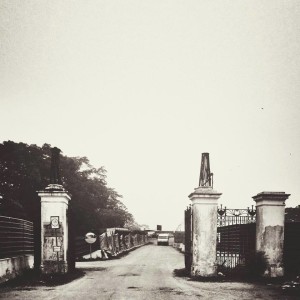



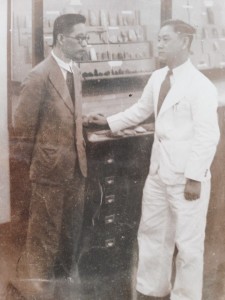
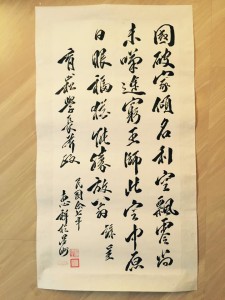
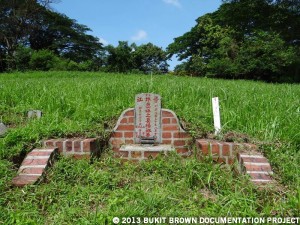

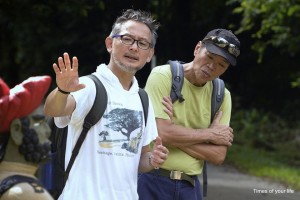
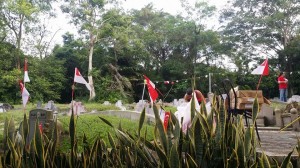
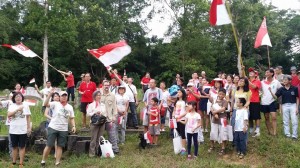
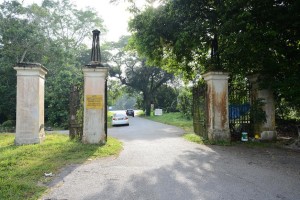
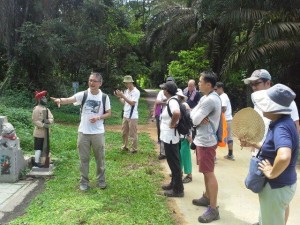

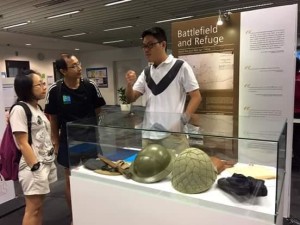
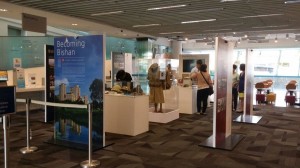
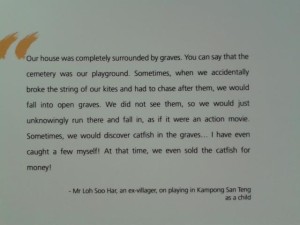
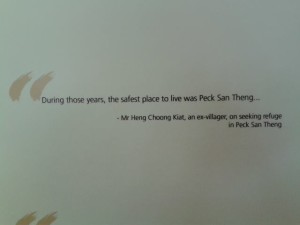
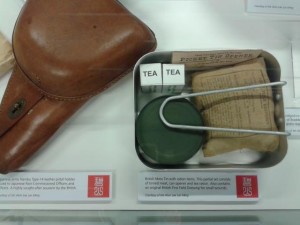
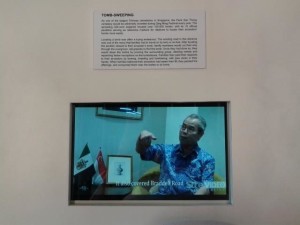
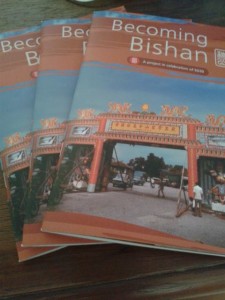
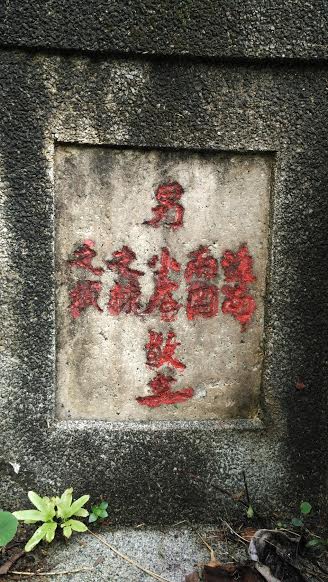
Recent Comments